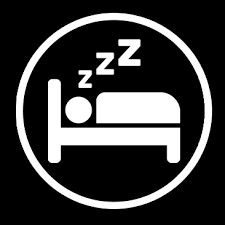Your friend is in tears over a recent breakup, so you too become sad in attempting to comfort her. You’re going on a run around campus with a classmate, and you can’t help but fall in sync with each others’ steps. You are in the library studying, but then you look up for a moment and see someone across the room check their phone, so you have the urge to pull your phone out and check it as well.

Mirroring: it happens in dozens of different ways to each of us every single day. Most of the time, we fail to even notice it. The people around us can be hugely influential over us in this respect, but why does mirroring occur in the first place? Why don’t we catch ourselves doing it? And why can an action so subconscious be so prevalent in our day-to-day life?
The scientific term for what we know as mirroring or mimicking is called embodied cognition. Whether it be a facial expression, a gesture, or some other form of body language, the most simple reason that embodied cognition exists is because we, as humans, are empathetic beings. We are far from being robotic, and we are able to experience hundreds of emotions.
We are also relational beings, by which I mean that in order for us to remain in a healthy social state, we have to be in contact with other people. Studies have even shown that infants and young children who are not in contact with other people from the start can develop serious social problems as they continue to develop. Think about it, whether you are an introvert or an extrovert, you need to interact with other people at some point during a day. Otherwise, you are left feeling alone and potentially depressed. We are empathetic, relational human beings.
So what role does embodied cognition, or mirroring play in our daily lives? Why is it important?
Embodied cognition wouldn’t matter if it didn’t play such a huge role in our daily lives. Mimicking is important because it demonstrates that we understand the people around us. For example, repeating words back to somebody, helps you and the other person to come to a mutual understanding. Embodied cognition is also a very important skill to us because it helps aid communication between people. In a study I found, researchers tried to better understand what is called the mirror neuron system (or MNS) in children. This system has been suggested to play a critical role in social cognition of children. In this study, 16 children (between the ages of nine and ten) were neurologically scanned to discover this neural mechanism by which others’ intentions, emotions, and actions could be explained.
What was found, was that there did exist a strong neurological connection between empathy and activity in the mirror neuron system. Despite the fact that the sample in this study was incredibly narrow and not very diverse, I think that it answers my own question. This neurological link is critical to our very existence. Without empathy, our daily activities would be limited, and vice versa.

So is mirroring ultimately a good thing? I would argue that it absolutely is. Don’t be freaked out the next time someone yawns and you find yourself yawning as well, or if you realize that you’re making the same exact facial expression as the person that your’re talking to. Rather, be encouraged– because you are obviously doing something right. You are being empathetic and relational, or human for that matter.





 Among teenagers and tourists, scientists have also shown an interest in Centralia. They are studying the bacteria and how it is evolving.
Among teenagers and tourists, scientists have also shown an interest in Centralia. They are studying the bacteria and how it is evolving.  Biochemist Madan Kharel visited a similar coal mine in Kentucky that has also caught fire. She went there to conduct similar study to that of Ashley Shade. She searched for bacteria to create new antibiotics and drugs for cancer research.
Biochemist Madan Kharel visited a similar coal mine in Kentucky that has also caught fire. She went there to conduct similar study to that of Ashley Shade. She searched for bacteria to create new antibiotics and drugs for cancer research. 



























